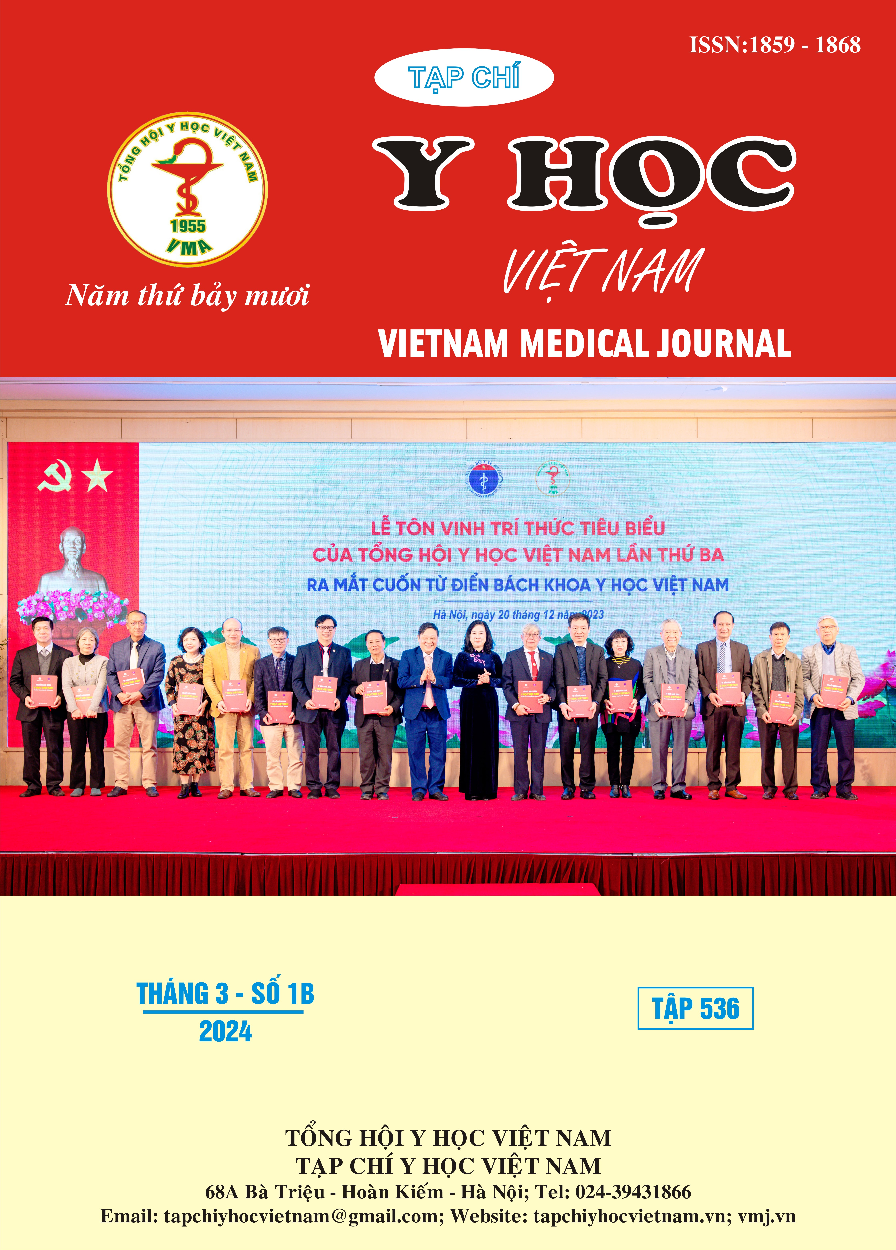EFFECTIVENESS OF USE A-PRF+ COMBINATION WITH MTA AS A APICAL PLUG IN ENDODONTIC TREATMENT OF OPEN APEX PERMANENT TEETH
Main Article Content
Abstract
Objectives: This study cases report aimed to evaluate the clinical treatment effectiveness of the procedure using A-PRF+ combined with MTA. Materials and methods: Fifteen permanent teeth with open apex requiring endodontic treatment in fourteen patients were recruited. Pre-treatment diagnosis is based on history of pain, clinical symptoms and periapical radiograph. After informed consent, the tooth was anesthetized, isolated with a rubber dam, opened the pulp, irrigated with 3% NaOCl and determined the working length. Shaped the canal, appliced intracanal medicine and recalled after a week. Placed A-PRF+ combination with MTA when was asymptomatic by taking 10 ml whole venous blood to centrifugation at A-PRF+ mode. Pressed the A-PRF+ into a membrane, cutted into appropriate size and gently placed in the apex. Then placed the calcium silicate layer about 5 thickness (MTA Angelus Repair HP – Angelus, Brazil) to the working length. Orturated the canal and restoration after 4 days. Clinical evaluation and periapical radiograph assessment after 1, 2, 3 months. Results: Quickly reduces clinical symptoms: pain, swelling and fistula. Clinical symptoms disappear after 3 months, no recurrence and the patients performed functions well. Conclusions: The A-PRF+ membrane and can be combined with MTA as an effective plug in endodontic treatment of permanent teeth with open apex brings high clinical effectiveness and can be applied in dental practice.
Article Details
References
2. Arshad, S., et al. (2021), "Platelet-Rich Fibrin Used in Regenerative Endodontics and Dentistry: Current Uses, Limitations, and Future Recommendations for Application", Int J Dent. 2021, p. 4514598.
3. Choukroun, J and Ghanaati, S (2017), "Introducing the low-speed centrifugation concept".
4. Fava, L.R.G and Saunders, W.P (1999), "Calcium hydroxide pastes: classification and clinical indications", International endodontic journal. 32(4), pp. 257-282.
5. Fujioka-Kobayashi, M, et al. (2017), "Optimized Platelet-Rich Fibrin With the Low-Speed Concept: Growth Factor Release, Biocompatibility, and Cellular Response", J Periodontol. 88(1), pp. 112-121.
6. Jayadevan, V., et al. (2021), "A comparative evaluation of Advanced Platelet-Rich Fibrin (A-PRF) and Platelet-Rich Fibrin (PRF) as a Scaffold in Regenerative Endodontic Treatment of Traumatized Immature Non-vital permanent anterior teeth: A Prospective clinical study", J Clin Exp Dent. 13(5), pp. 463-472.
7. Miron, R. J and Choukroun, J (2017), Platelet Rich Fibrin in Regenerative Dentistry Biological Background and Clinical Indications, Vol. 1, John Wiley & Sons Ltd, United States of America.
8. Mohammad, S, Edward, S. L, and Mahmoud, T (2020), PRF applications in endodontics, Quintessence Publishing Co, Inc, Batavia, 9-23.
9. Rucha, S, et al. (2023), "Advanced platelet rich fibrin demonstrates improved osteogenic induction potential in human periodontal ligament cells, growth factor production and mechanical properties as compared to leukocyte and platelet fibrin and injectable platelet rich fibrin", Oral Maxillofac Surg.
10. Sharma V, et al. (2016), "Endodontic management of nonvital permanent teeth having immature roots with one step apexification, using mineral trioxide aggregate apical plug and autogenous platelet-rich fibrin membrane as an internal matrix: Case series", Contemp Clin Dent. 7(1), pp. 67-70.


